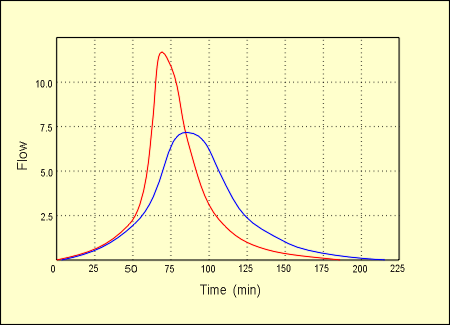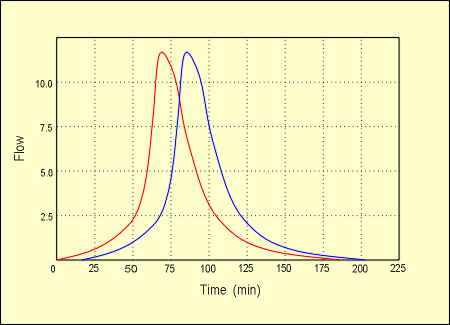
Home > Storm Mode > Theory > Illudas Method > Routing
You can select one of two routing methods for modelling the passage of flow hydrographs through the links - Continuity routing or Time Shift routing. During the routing process, a volumetric check is performed on the flow to ensure a high level of accuracy. The results of this check are displayed with the other analysis results.
No provision is made at present for surcharge and changes in direction within the system. The program assumes that steady state flow prevails.
The first routing option is based on the Continuity equation (volume in = volume out) and takes the storage element of the link into account.
Depending on the size and the length of the conduit, the hydrograph peak can be considerably reduced (attenuated).

Note that the hydrograph peak is offset to the right and reduced, and that the volume remains constant i.e. the flow is more evenly distributed over a longer period of time.
Continuity routing can reduce the peak of the outflow hydrograph, while the area under the curve (the volume) remains constant.
The time shift routing method applies an offset to the hydrograph to reflect the time it takes the flow to travel through the culvert.
In this instance, the velocity is calculated for the peak flow passing through the link. The travel time is determined and the link hydrograph shifted by the travel time, before it is added onto the next or downstream link.

Time Shift Routing offsets the hydrograph by the travel time through the link.
See Also Storm Network Analysis